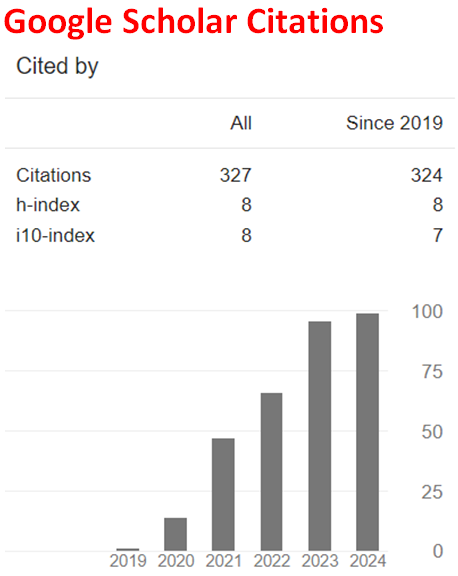Effect of Electric Field on ANTA
Abstract
The present study considers an insensitive explosive, ANTA, (5(3)-amino-3(5)-nitro-1H-1,2,4-triazole) which is optimized within the restrictions of DFT (B3LYP/cc-PVTZ and B3LYP/6-311++G(d,p)). The optimized structure is subsequently subjected to single-point semi empirical MNDO and/or PM3 level of calculations to visualize the effect of electric field which has been set to magnitudes of 0.001 and 0.01 au. Perturbations on the energy and dipole moment are investigated. Also, the directional effect of the field along the axes of inertia of the molecule has been investigated. Generally, the effect of the field is more pronounced along the principle axis of ANTA.
Downloads
References
D.C. Young, Computational Chemistry, New York: Wiley-Interscience, 2001.
H.A. Kurtz, J.J.P. Stewart and K.M. Dieter, Calculation of the nonlinear optical properties of molecules, J. Computational Chemistry 11(1) (1990), 82-87. https://doi.org/10.1002/jcc.540110110
P.W. Atkins, Quanta, Oxford Chemistry Series, Oxford: Clarendon Press, 1974.
A. Hinchliffe and R.W. Munn, Molecular Electromagnetism, Chichester: Wiley, 1985.
V. Kondratyev, The Structure of Atoms and Molecules, Moscow: Mir, 1967.
V. Librando, A. Alparone and Z. Minniti, Computational study on dipole moment, polarizability and second hyperpolarizability of nitronaphthalenes, J. Molecular Structure (Theochem) 856 (2008), 105-111. https://doi.org/10.1016/j.theochem.2008.01.022
D.P. Shelton, Dispersion of the nonlinear susceptibility measured for benzene, J. Opt. Soc. Am. B 2 (1985), 1880-1882. https://doi.org/10.1364/JOSAB.2.001880
S. Millefiori and A. Alparone, Ab initio study of the molecular structure, polarizability and first hyperpolarizability of 6-hydroxy-1-formylfulvene, J. Chem. Soc., Faraday Trans. 90 (1994), 2873-2879. https://doi.org/10.1039/FT9949002873
R. Zaleśny, I.W. Bulik, W. Bartkowiak, J.M. Luis, A. Avramopoulos, M.G. Papadopoulos and P. Krawczyk, Electronic and vibrational contributions to first hyperpolarizability of donor-acceptor-substituted azobenzene, J. Chem. Phys. 133 (2010), 244-308. https://doi.org/10.1063/1.3516209
I. Harczuk, O. Vahtras and H. Ågren, Hyperpolarizabilities of extended molecular mechanical systems, Phys. Chem. Chem. Phys. 18 (2016), 8710-8722. https://doi.org/10.1039/c5cp06688c
W. Bartkowiak, R. Zaleśny, W. Niewodniczański and J. Leszczynski, Quantum chemical calculations of the first- and second-order hyperpolarizabilities of molecules in solutions, J. Phys. Chem. A 105(47) (2001), 10702-10710. https://doi.org/10.1021/jp010682s
D. Paschoal and H.F. Dos Santos, Assessing the quantum mechanical level of theory for prediction of linear and nonlinear optical properties of push-pull organic molecules, Mol. Model 19 (2013), 2079-2090. https://doi.org/10.1007/s00894-012-1644-4
J.P. Agrawal, High Energy Materials, Weinheim: Wiley-VCH, 2010. https://doi.org/10.1002/9783527628803
K.Y. Lee, C.B. Storm, M.A. Hiskey and M.D. Coburn, An improved synthesis of 5-amino-3-nitro-1H-1,2,4-triazole (ANTA), a useful intermediate for the preparation of insensitive high explosives, J. Energ. Mat. 9(5) (1991), 415-428. https://doi.org/10.1080/07370659108019382
R.L. Simpson, P.F. Pagoria, A.R. Mitchell and C.L. Coon, Synthesis, properties and performance of the high explosive ANTA, Prop. Explos. Pyrotech. 19 (1994), 174-179. https://doi.org/10.1002/prep.19940190405
T.D. Manship, D.M. Smith and D.G. Piercey, An improved synthesis of the insensitive energetic material 3-amino-5-nitro-1,2,4-triazole (ANTA), Prop. Explos. Pyrotech. 45(10) (2020), 1621-1626. https://doi.org/10.1002/prep.202000097
J.F. Moxnes, Ø. Frøyland and T. Risdal, A computational study of ANTA and NTO derivatives, Journal of Molecular Modeling 23(8) (2017), 240. https://doi.org/10.1007/s00894-017-3408-7
J.J.P. Stewart, Optimization of parameters for semi empirical methods I, J. Comput Chem. 10 (1989), 209-220. https://doi.org/10.1002/jcc.540100208
J.J.P. Stewart, Optimization of parameters for semi empirical methods II, J. Comput. Chem. 10 (1989), 221-264. https://doi.org/10.1002/jcc.540100209
A.R. Leach, Molecular Modeling, Essex: Longman, 1997.
W. Kohn and L.J. Sham, Self-consistent equations including exchange and correlation effects, Phys. Rev. 140 (1965), 1133-1138. https://doi.org/10.1103/PhysRev.140.A1133
R.G. Parr and W. Yang, Density Functional Theory of Atoms and Molecules, London: Oxford University Press, 1989.
A.D. Becke, Density-functional exchange-energy approximation with correct asymptotic behavior, Phys. Rev. A 38 (1988), 3098-3100. https://doi.org/10.1103/PhysRevA.38.3098
S.H. Vosko, L. Vilk and M. Nusair, Accurate spin-dependent electron liquid correlation energies for local spin density calculations: a critical analysis, Can. J. Phys. 58 (1980), 1200-1211. https://doi.org/10.1139/p80-159
C. Lee, W. Yang and R.G. Parr, Development of the Colle-Salvetti correlation-energy formula into a functional of the electron density, Phys. Rev. B 37 (1988), 785-789. https://doi.org/10.1103/PhysRevB.37.785
SPARTAN 06, Wavefunction Inc., Irvine CA, USA, 2006.
Hyperchem 7.0, Hypercube Inc., Waterloo, Ontario, Canada, 2002.
L.V. Interrante and M.S. Hampton-Smith, Chemistry of Advanced Materials, New York: Wiley-VCH, 1998.
D. Lu, G. Chen, J.W. Perry and W.A. Goddard, Valence-bond charge-transfer model for nonlinear optical properties of charge-transfer organic molecules, J. Am. Chem. Soc. 116(23) (1994), 10679-10685. https://doi.org/10.1021/ja00102a037
R. Marder, D.N. Beratan, L.T. Cheng, Approaches for optimizing the first electronic hyperpolarizability of conjugated organic molecules, Science 252 (5002) (1991), 103-106. https://doi.org/10.1126/science.252.5002.103
S.R. Marder, C.B. Gorman, F. Meyers, J.W. Perry, G. Bourhill, J.-Luc. Brédas and B.M. Pierce, A unified description of linear and nonlinear polarization in organic polymethine dyes, Science 265(5172) (1994), 632-635. https://doi.org/10.1126/science.265.5172.632
F. Meyers, S.R. Marder, B.M. Pierce and J.L. Bredas, Investigation of the relationship between molecular polarizabilities (alpha, beta and gamma) and bond length alternation, J. Am. Chem. Soc. 116(23) (1994), 10703-10714. https://doi.org/10.1021/ja00102a040
C.B. Gorman and S.R. Marder, An investigation of the interrelationships between linear and nonlinear polarizabilities and bond-length alternation in conjugated organic molecules, Proc. Natl. Acad. Sci., USA 90 (1993), 11297-11301. https://doi.org/10.1073/pnas.90.23.11297
P. Atkins and J. de Paula, Atkins’ Physical Chemistry, 7th ed., Oxford: Oxford University Press, 2002.
V. Anbu, K.A. Vijayalakshmi, R. Karunathan, A.D. Stephen and P.V. Nidhin, Explosives properties of high energetic trinitrophenyl nitramide molecules: A DFT and AIM analysis, Arab. J. Chem. 12(5) (2019), 621-632.
https://doi.org/10.1016/j.arabjc.2016.09.023
N.R. Badders, C. Wei, A.A. Aldeeb, W.J. Rogers and M.S. Mannan, Predicting the impact sensitivities of polynitro compounds using quantum chemical descriptors, J. Energ. Mater. 24 (2006), 17-33. https://doi.org/10.1080/07370650500374326

This work is licensed under a Creative Commons Attribution 4.0 International License.


